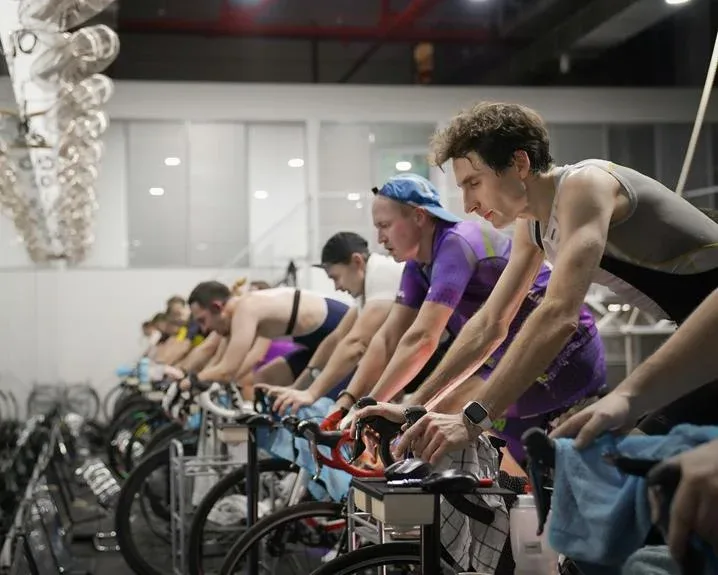You’re gearing up for your next triathlon, but have you considered what not to wear? The right clothing can make a significant difference in your race performance. Imagine the discomfort of chafing or the drag of improper gear – not ideal for achieving your best time.
From fabric choices to footwear, each decision plays a crucial role in your success on race day. So, before you hit the start line, let’s delve into key tips that will ensure you’re dressed for triumph in your upcoming triathlon.
Key Takeaways
- Choose moisture-wicking fabrics to avoid discomfort and skin irritation
- Opt for triathlon-specific attire for enhanced performance in all disciplines
- Select proper footwear to prevent injuries and improve performance
- Avoid unnecessary accessories that may hinder speed and agility
Fabric Choice Matters
When gearing up for a triathlon, your fabric choice plays a crucial role in your comfort and performance on race day. Opting for moisture-wicking fabrics like nylon and spandex is essential as they help prevent chafing and discomfort during the race. Unlike cotton, which retains moisture and can lead to chafing, added weight, and increased discomfort, these fabrics keep you dry and comfortable.
Selecting lightweight and breathable materials that dry quickly is key to maintaining comfort throughout the triathlon. Fabrics with UPF protection also provide an added benefit by shielding your skin from harmful UV rays during long hours in the sun. Additionally, choosing compression fabrics can enhance muscle support, improve blood circulation, and contribute to better performance and quicker recovery.
Say No to Cotton
Avoid the pitfalls of discomfort and hindered performance by steering clear of cotton clothing in your triathlon gear selection.
Cotton, known for its moisture-absorbing properties, isn’t ideal for a triathlon. During intense physical activity, cotton retains sweat, leading to wetness and potential skin irritation. This moisture retention can result in chafing, discomfort, and overall decreased performance.
Unlike moisture-wicking and quick-drying fabrics designed for athletic pursuits, cotton doesn’t efficiently draw sweat away from the skin or dry rapidly, leaving you feeling heavy and damp throughout the race.
To ensure maximum comfort and performance during your triathlon, opt for attire made from materials specifically crafted to manage moisture and enhance your overall experience. By choosing performance-oriented fabrics over cotton clothing, athletes can minimize the risk of chafing, skin irritation, and discomfort, allowing them to focus on achieving their best results on race day.
Opt for Triathlon-Specific Attire
For optimal performance and comfort in your triathlon, selecting triathlon-specific attire is essential. Triathlon-specific attire is purposefully designed to enhance your performance across all three disciplines.
These garments are crafted from quick-drying fabrics, allowing you to seamlessly transition between the swim, bike, and run without being weighed down by moisture.
Tri suits, a staple in triathlon attire, offer padding for cycling, compression for comfort, and a snug fit that feels like a second skin, reducing drag and boosting aerodynamics.
Avoid Unsupportive Footwear
To excel in your triathlon and prevent discomfort, blisters, and potential injuries, ensuring you wear supportive footwear is paramount. When it comes to your shoes, here are some key tips to keep in mind:
- Choose Tri-Specific Footwear: Opt for shoes designed specifically for triathlons to ensure they offer the support and features you need for each segment of the race.
- Focus on Fit: Make sure your shoes fit properly to avoid issues like blisters, hot spots, or discomfort during the race.
- Enhance Performance: Investing in high-quality, well-fitted shoes can significantly improve your performance by reducing foot fatigue and helping you maintain proper form.
- Versatility is Key: Look for footwear that’s suitable for both cycling and running, providing the breathability, lightweight feel, and support necessary for a successful race experience.
Steer Clear of Unnecessary Accessories
When preparing for a triathlon, be mindful of the accessories you choose to wear to optimize your performance and streamline your race experience.
It’s crucial to avoid unnecessary items that could hinder your performance or cause discomfort during the race. Jewelry, for example, can be bothersome and may even pose a safety risk if it gets caught on something. Bulky items like large watches or excessive headgear can weigh you down, affecting your speed and agility.
Furthermore, using untested gear on race day could lead to unexpected issues that might derail your performance. It’s also important to adhere to race regulations and avoid wearing items that are prohibited, as they could result in penalties or disqualification.
Conclusion
When gearing up for a triathlon, remember to prioritize comfort and performance by choosing the right clothing and gear. Opt for quick-drying fabrics, triathlon-specific attire, and supportive footwear. Avoid cotton, unnecessary accessories, and underwear under your tri suit for maximum comfort and efficiency.
By following these key tips, you’ll be well-prepared to tackle the swim, bike, and run stages with ease and confidence. Gear up, stay focused, and crush that triathlon!
